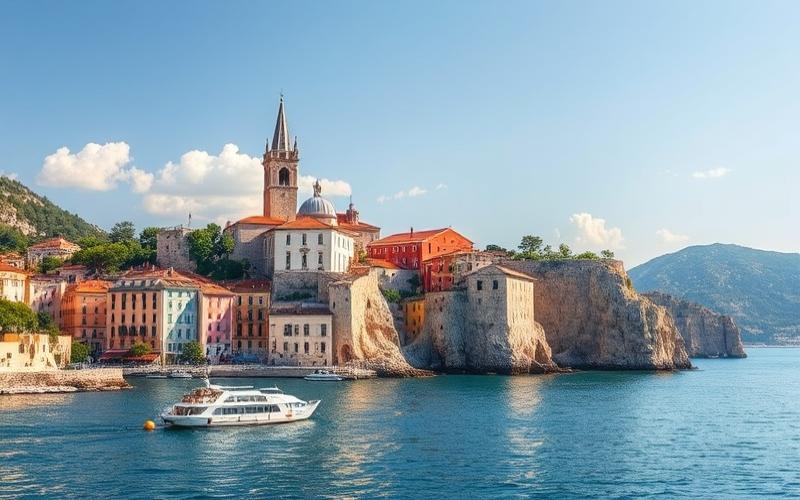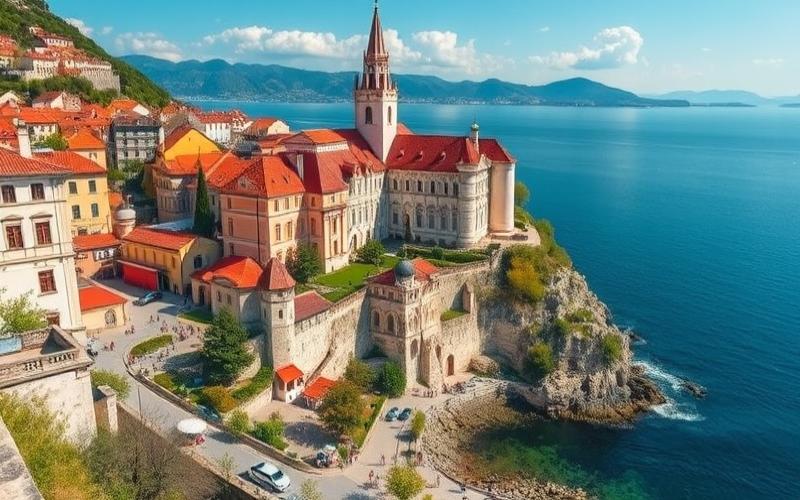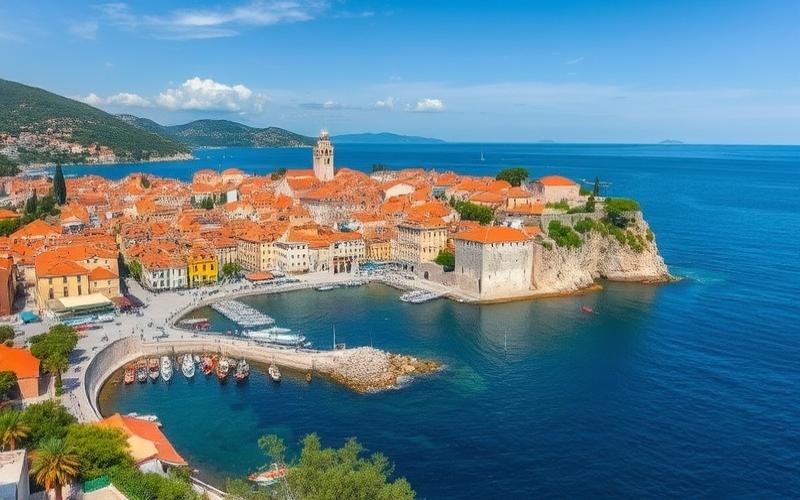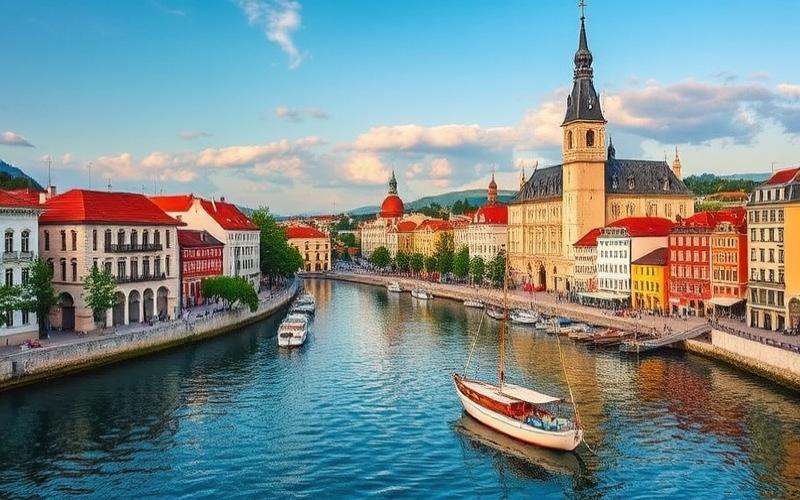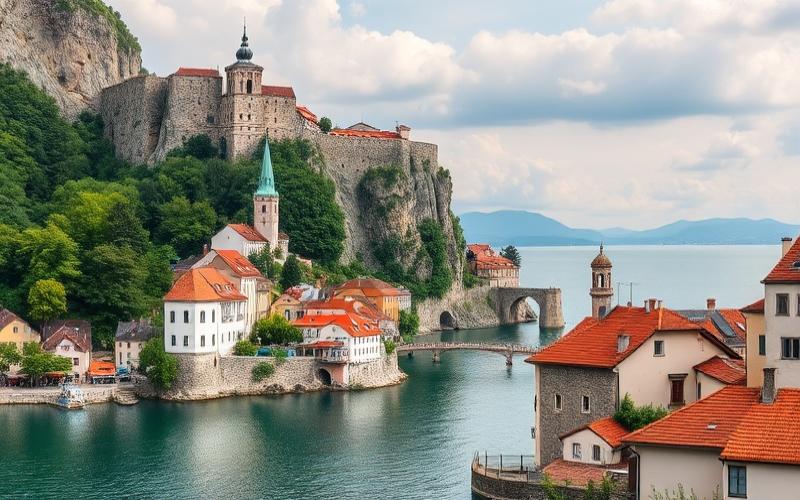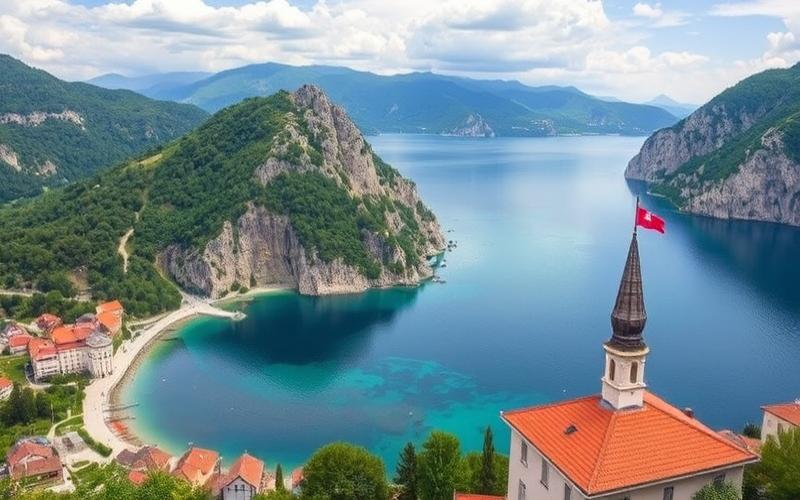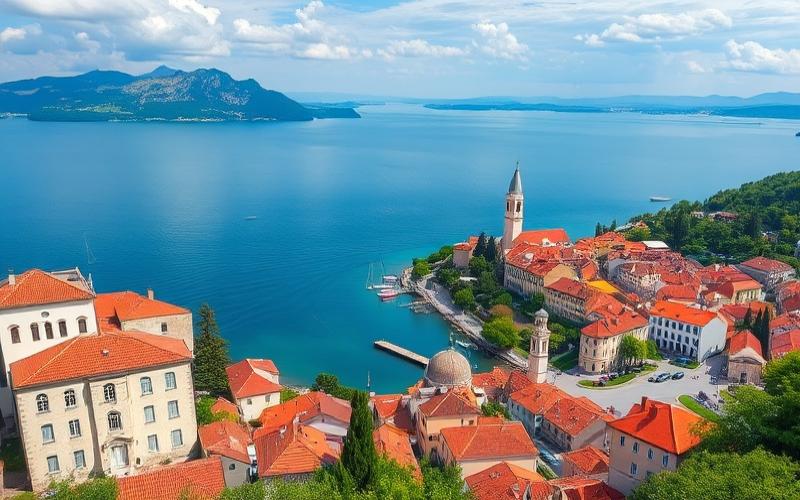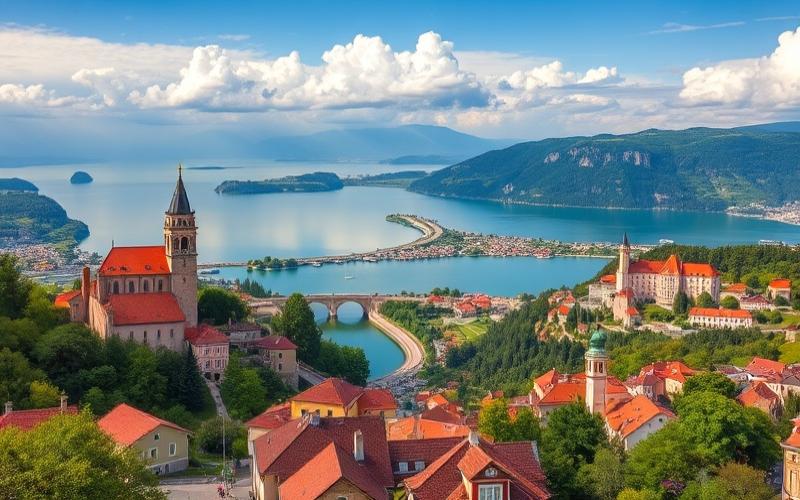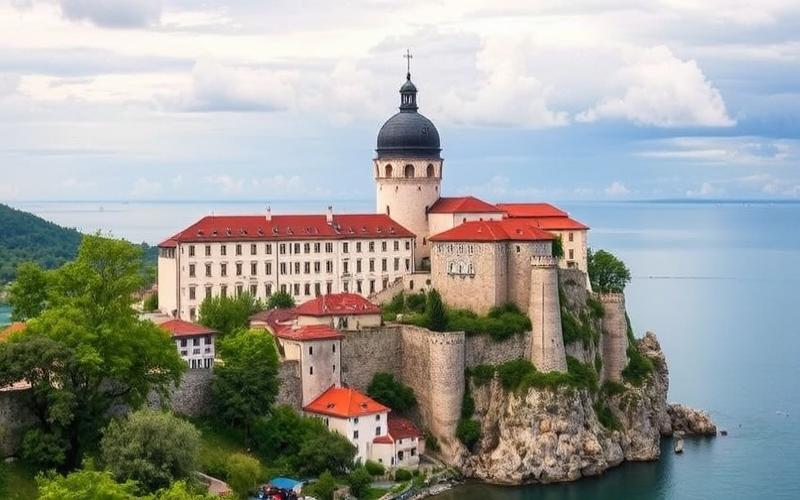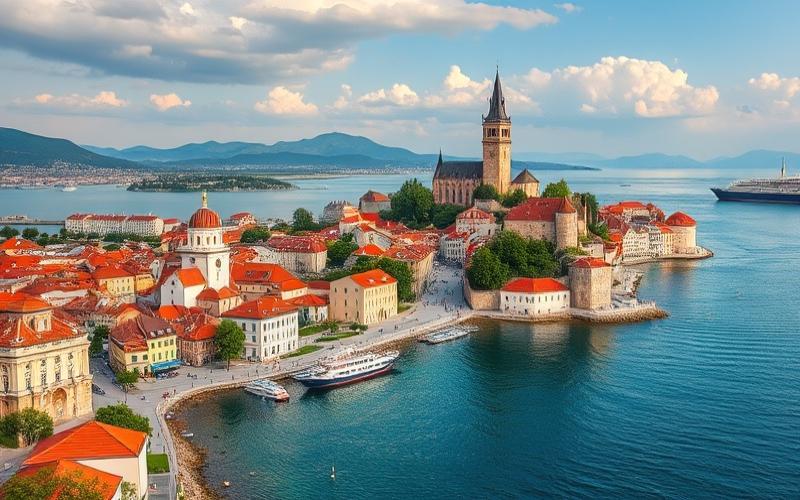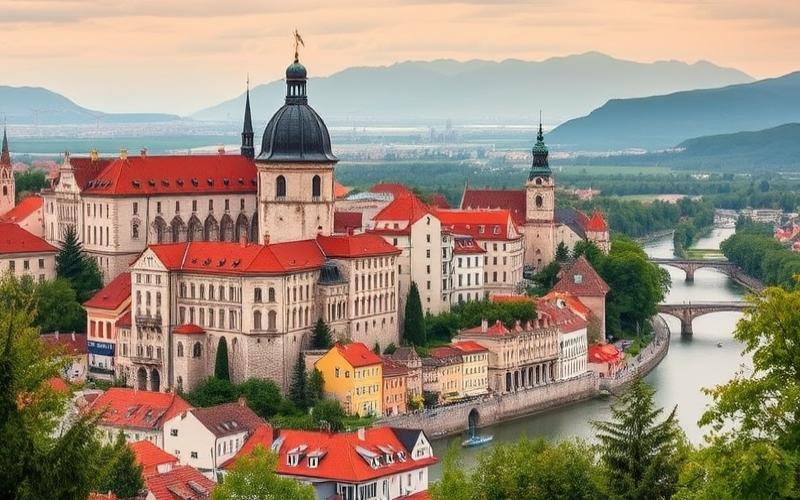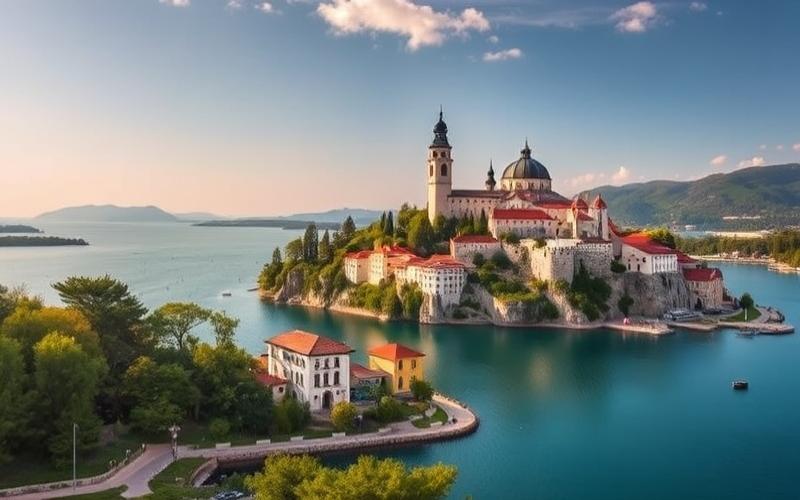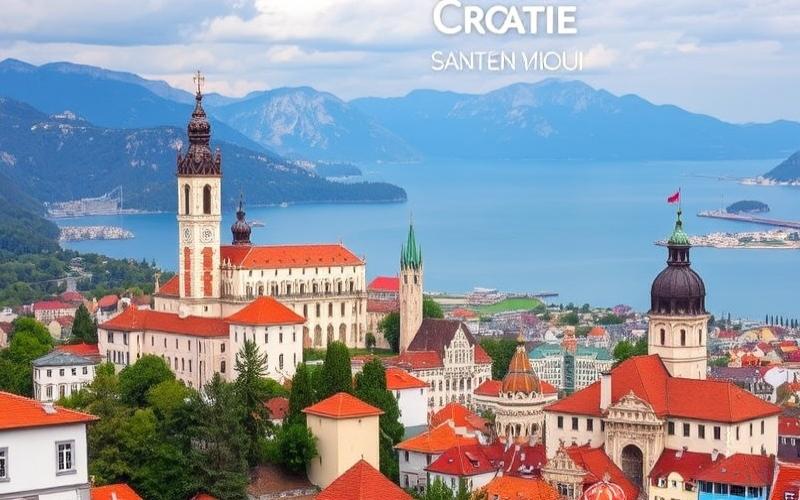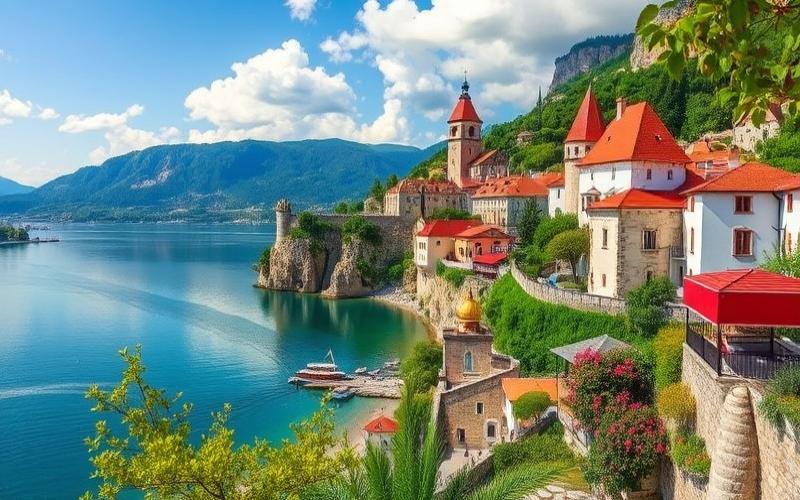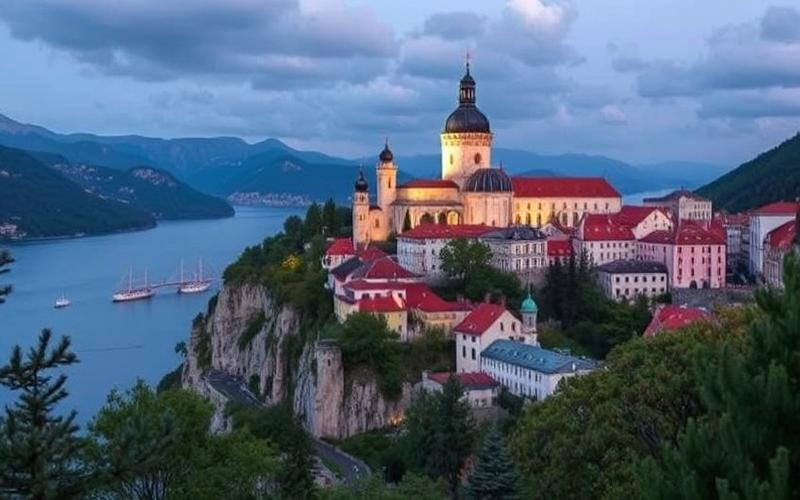
 Published on and written by Cyril Jarnias
Published on and written by Cyril Jarnias
Croatia, with its rich cultural heritage and picturesque coastal landscapes, is a top destination for travelers eager for discovery. For those wishing to explore this country without worrying about driving, public transportation represents a practical and economical option.
Whether you plan to stroll through the historic alleys of Dubrovnik, enjoy the idyllic beaches of Split, or immerse yourself in the vibrant atmosphere of Zagreb, understanding how Croatian buses, trains, and ferries work is essential for a smooth trip.
This practical guide will reveal tips for optimizing your travel, associated costs, and how to navigate between different transportation options to fully enjoy your stay in Croatia.
Discovering Transportation Modes in Croatia
Croatia offers a variety of transportation means suited to every type of traveler and region: buses, trains, ferries, and car rental services.
| Transportation Mode | Coverage | Main Advantages | Disadvantages / Particularities | Practical Tips |
|---|---|---|---|---|
| Bus | National, major cities and villages | Extensive network, economical, frequent | Less convenient on islands and some rural areas | Buy tickets online or at stations, plan ahead during high season |
| Train | Zagreb, Osijek, Rijeka, Split (not Dubrovnik) | Comfort, low prices, ideal for some regional connections | Limited network, no connection to Dubrovnik | Check schedules and connections, buy tickets at stations or online |
| Ferry | Mainland-island and inter-island connections | Essential for exploring islands, scenic views | Seasonal, boarding not guaranteed without reservation | Book early in summer, arrive early, tickets online or at counters |
| Car Rental | National, ideal for rural areas and islands | Flexibility, access to remote places | Cost, parking, sometimes winding roads | Book in advance, compare offers, check insurance |
Focus on Bus Networks in Major Cities:
- Zagreb: The central bus station is near downtown, with many regional and national connections. City buses efficiently serve all neighborhoods.
- Split: The bus station is near the port, facilitating connections with ferries. Dense network for reaching towns and villages in Dalmatia.
- Dubrovnik: The main bus station is 5 km from the old town (connection by city bus or taxi). Local operator: Libertas. Efficient for regional travel, less so for trains (no train station).
Bus Network Characteristics:
- Efficiency: High frequency, punctuality, modern and air-conditioned vehicles.
- Accessibility: Tickets available at stations, on online platforms (Bookaway, GetByBus), or via company websites (Arriva, FlixBus).
- Budget: Most economical option for long trips. Luggage fees to consider (about €1.30 per piece for checked baggage).
Main Railway Lines and Connectivity:
- Main Lines:
- Zagreb ↔ Split (north-south line)
- Zagreb ↔ Rijeka (to the northern coast)
- Zagreb ↔ Osijek (to the east)
- No Train to Dubrovnik: The city has no train station.
- Connectivity: Trains are slower than buses but offer good comfort and attractive prices for some regional connections. The network is mainly useful for connecting major cities in the north and east.
Role of Ferries:
- Essential for connecting the mainland to islands (Hvar, Brač, Korčula, Mljet, etc.) and providing transport between islands themselves.
- Main Operators: Jadrolinija (state-owned, largest fleet), Kapetan Luka, TP Line.
- Particularities: Some routes are in high demand in summer, and boarding is not guaranteed without prior reservation. Several islands are car-free (e.g., Lopud, Koločep, Silba).
Practical Tips for Each Transportation Mode:
- Bus:
- Buy tickets in advance, especially in July-August.
- Check schedules on online platforms.
- Allow extra time for traffic during high season.
- Train:
- Use for trips between major cities except Dubrovnik.
- Buy tickets at stations or online, check connections.
- Ferry:
- Book in advance during high season.
- Arrive at least 1 to 2 hours before departure.
- On some routes, priority boarding for prepaid tickets.
- Car Rental:
- Ideal for exploring inland areas, Istria, or less-served islands.
- Be cautious with parking and driving in historic centers.
Cultural and Regional Particularities:
- Croats often prefer buses for regional travel.
- Transport schedules are adapted to the tourist season: reduced in winter, more frequent in summer.
- Some islands and rural areas are better served by car or private ferry.
- Punctuality is generally respected, but arriving early is advised, especially in summer.
Suggestions for an Optimal Experience:
- Prefer buses for intercity and economical connections.
- Use ferries to discover islands, combined with local car rental to explore inland areas.
- For less-served regions, cars offer total freedom.
- Plan trips considering seasonality and book tickets in advance to avoid surprises.
Tip: The bus + ferry combination is the most effective for a varied and authentic trip in Croatia, limiting costs and discovering the territory’s diversity.
Good to Know:
Buses in Zagreb are very frequent, but in Dubrovnik, ferries are essential for traveling to the islands; remember to book your train tickets in advance to travel between Split and Zagreb. Rental cars are ideal for exploring Croatian rural landscapes, where public transportation is limited.
Planning Your Transportation Budget in Croatia
Estimated Average Costs of Public Transportation in Croatia:
| Transportation Method | Unit Fare (Low Season) | Unit Fare (High Season or Onboard Purchase) | Pass/Daily Tickets |
|---|---|---|---|
| City Bus | €1.25 to €1.40 | Up to €3.50 (onboard purchase) | 24h: €4; Weekly: €19.90 |
| Streetcar (Zagreb) | €0.50 (30 min) – €1.30 (90 min) | €2.00 (night) | 24h: €4; 3 Days: €9.30; Weekly: €19.90 |
| Ferry (Split-Dubrovnik) | €40 per trip | Up to €40 | No pass, variable fares by season |
| Intercity Bus | €35 (Dubrovnik) – €45 (Zagreb) | Varies by destination |
Price Variations by Tourist Seasons:
- Transportation prices remain generally stable, but car rentals, taxis, and some ferries can cost up to 3 to 4 times more in high season.
- The price of a single bus or streetcar ticket varies little, but crowds can make some trips longer or require advance booking.
Practical Tips for Saving Money:
- Buy tickets in advance (online, vending machines, or authorized sellers) to get the best rates.
- Opt for daily or weekly passes for multiple urban trips.
- Avoid buying tickets from drivers (surcharge).
- Use official mobile apps to access discounted fares and plan trips efficiently.
Accepted Payment Methods:
- Tickets and passes can be purchased with cash (kuna or euro depending on the region), by credit card at most vending machines, and sometimes via mobile apps.
- Bus/streetcar drivers prefer exact change, especially for onboard purchases.
Impact of Location (Zagreb, Split, Dubrovnik) on Transportation Budget:
| City | Transportation Offer | Budget Impact | Local Specifics |
|---|---|---|---|
| Zagreb | Streetcars, buses, funicular | Moderate budget, passes useful | Dense network, extended hours |
| Split | City buses, ferries | Slightly more expensive | Island access by ferry, few streetcars |
| Dubrovnik | City buses, ferry | Higher in season | Few lines, expensive ferries |
Major cities offer advantageous passes, while in coastal cities (Split, Dubrovnik), ferries and taxis increase the budget.
Useful Mobile Apps:
- ZET Zagreb: schedules, ticket purchase for streetcars/buses in Zagreb
- Promet Split: city bus information in Split, ticket purchase
- Arriva, Flixbus: intercity bus booking and real-time fare estimates
- Jadrolinija, Krilo: ferry schedules and fares
- Moovit, Google Maps: trip planning, real-time schedules and disruptions
Additional Tips:
- Budget more in high season, especially on the coast
- Always check ticket validity (duration and zones)
- For ferries, book in advance in summer
- Use apps to quickly compare prices and schedules
Good to Know:
Public transportation costs in Croatia range from €1 to €3 for a bus or streetcar trip, and up to €10 for a ferry, with notable increases in high season; to save money, opt for daily or weekly passes and note that credit cards are widely accepted, especially in major cities like Zagreb, Split, and Dubrovnik. Use mobile apps like Moovit or ZagrebBus to plan your trips and know real-time fares.
Tips for Optimizing Public Transportation Travel
Practical Tips for Optimizing Public Transportation Travel in Croatia:
- Use Mobile Apps and Specialized Websites
- Apps like GetByBus, BusCroatia, or platforms of local companies (Promet Split, Liburnija, Libertas) allow real-time checking of bus and train schedules, routes, and delays.
- For trains, the network is limited but the HŽPP app (national company) is useful for trips from Zagreb or in the North.
- For ferries, the Jadrolinija app provides schedules and booking for island connections.
- Buy Tickets in Advance
- Prefer online purchases (apps, official websites) or at “Tisak”/”iNovine” kiosks for city and intercity buses to avoid lines, especially in high season or for popular destinations.
- For ferries, book as early as possible for popular routes (Split-Hvar, Dubrovnik-Korčula).
- Take Advantage of Discounts and Tourist Offers
- In Zagreb, the Zagreb Card provides unlimited public transport rides and discounts at many museums and attractions.
- Some bus companies offer reduced fares for children, students, seniors, or groups.
- Daily or multi-day passes exist in several cities to optimize the budget.
- Avoid Rush Hours
- Avoid travel between 7:30-9:30 AM and 4:30-6:30 PM, especially in Zagreb, to reduce travel time and crowds.
- Prefer “express” buses that make fewer stops for long distances.
- Optimize Transfers Between Transportation Modes
- Plan transfers using the mentioned apps, which integrate buses, trains, and ferries.
- In major stations (e.g., Zagreb or Split), follow multilingual signage and allow extra time for platform or terminal changes.
- Bus and ferry terminals are generally located near train stations in major cities.
- Adopt Local Best Practices
- Always validate your ticket onboard, even if purchased in advance or online: there are often validators at the bus or streetcar entrance.
- Keep your travel document for the entire trip: frequent checks are conducted, especially in Zagreb and Dubrovnik.
- For city buses, board at the front, exit at the rear, and give up seats to elderly or mobility-impaired persons.
- Navigate Stations Easily
- Major bus stations (Zagreb, Split, Dubrovnik) have multilingual electronic displays and orientation maps.
- Prepare in advance the location of platforms or counters using maps available online or in apps.
- If needed, ask staff for help, as they often speak English in tourist areas.
| Tip | Tools / Best Practices | Main Benefit |
|---|---|---|
| Real-Time Tracking | GetByBus, BusCroatia, Jadrolinija Apps | Less stress, reliable routes |
| Advance Ticket Purchase | Kiosks, Online Platforms | Avoids lines, guarantees seat |
| Tourist Discounts | Zagreb Card, Multi-Day Passes | Optimized budget, easier access |
| Avoid Rush Hours | Travel Outside Peak Times | Faster trip, less crowded |
| Transfer Optimization | Planning via Apps, Station Maps | Less waiting, smooth travel |
| Ticket Validation | Onboard Validators, Frequent Checks | Rule compliance, no fines |
| Station Navigation | Signage, Interactive Maps, Staff | Quick orientation, fewer errors |
Key Takeaway:
Optimize each trip by combining digital tools, advance planning, and respecting local practices to fully enjoy Croatian public transportation.
Good to Know:
Use mobile apps like HŽPP to track train schedules in real time and avoid rush hours to reduce your travel time. Buy your tickets online in advance to take advantage of tourist discounts, and always validate your travel document upon entering the bus or streetcar.
Disclaimer: The information provided on this website is for informational purposes only and does not constitute financial, legal, or professional advice. We encourage you to consult qualified experts before making any investment, real estate, or expatriation decisions. Although we strive to maintain up-to-date and accurate information, we do not guarantee the completeness, accuracy, or timeliness of the proposed content. As investment and expatriation involve risks, we disclaim any liability for potential losses or damages arising from the use of this site. Your use of this site confirms your acceptance of these terms and your understanding of the associated risks.





